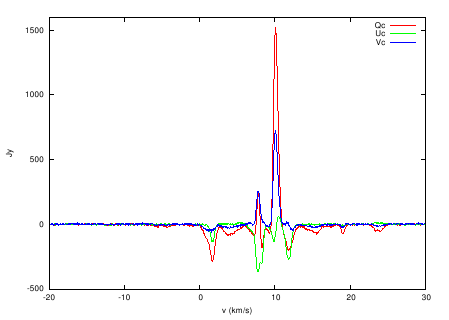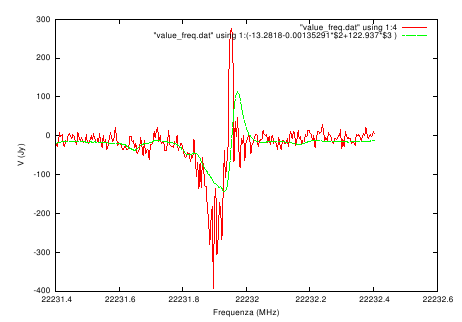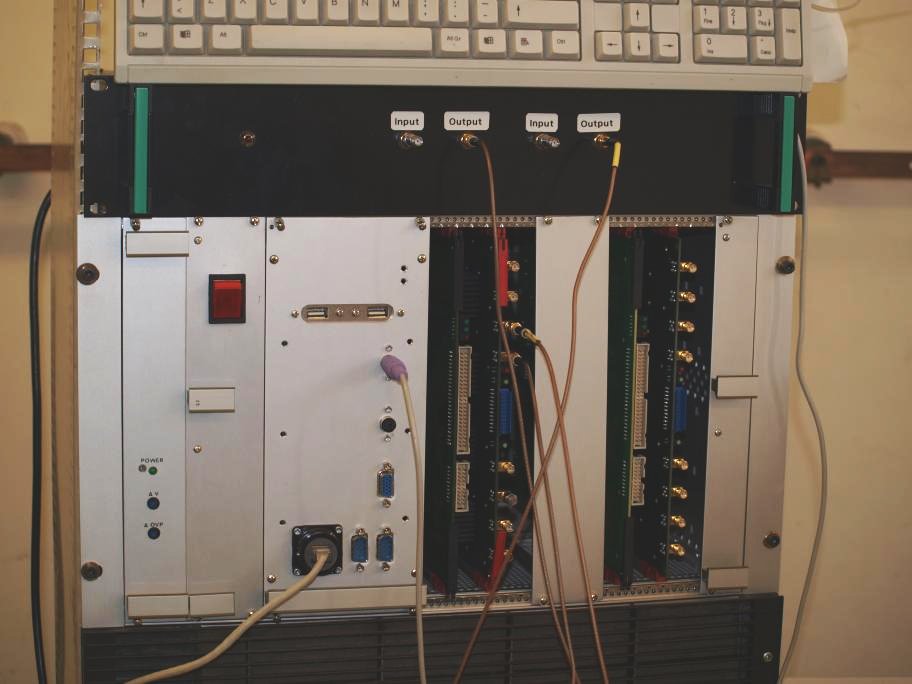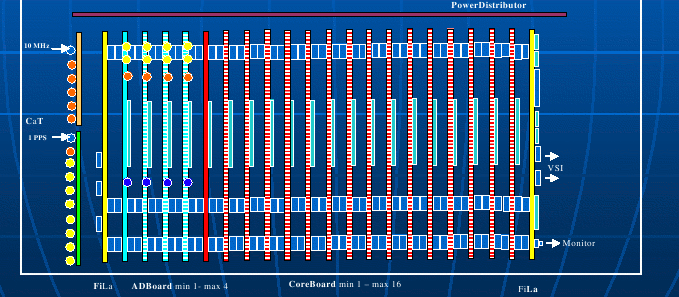 -
-

 A spectrometer with 16 input channels (8 dual polarization), based on the
ALMA Tunable Filter Board. The board has been reprogrammed to implement the
spectrometers and associated digital filters. The instrument is composed of
two TFB boards, two sampler boards, and a control PC.
A spectrometer with 16 input channels (8 dual polarization), based on the
ALMA Tunable Filter Board. The board has been reprogrammed to implement the
spectrometers and associated digital filters. The instrument is composed of
two TFB boards, two sampler boards, and a control PC.
The main characteristics of the instrument are:
The instrument has been tested using water masers in Orion (left) and W49 (right).
References:
 The Digital Baseband Converter (DBBC) is a project of the Noto radiotelescope
together with other institutes, in order to develop a all-digital replacement
for the VLBI data acquisition terminal. The DBBC analyzes up to
4 IF signals, typically 2 polarizations with a total band of 1 GHz per
polarization, divided in 2 chunks of 500 MHz each. A number of channels
each up to 32 MHz is extracted from the IF signals and sent to a MK5
(disk based) recorder.
The Digital Baseband Converter (DBBC) is a project of the Noto radiotelescope
together with other institutes, in order to develop a all-digital replacement
for the VLBI data acquisition terminal. The DBBC analyzes up to
4 IF signals, typically 2 polarizations with a total band of 1 GHz per
polarization, divided in 2 chunks of 500 MHz each. A number of channels
each up to 32 MHz is extracted from the IF signals and sent to a MK5
(disk based) recorder.
The hardware is quite flexible. It is composed of a stack of different modules (ADC; processing; electric interface to the recorder) and systems with different complexity can be obtained adding more modules.
The Arcetri group has acquired a DBBC in a minimal configuration, and has started a study to explore the possibility to use it as a general purpose backend.
A general framework logic has been studied for the processing module (CORE1), based on a Xilinx Virtex2 FPGA. It includes the interface to the high speed data busses, clock distribution and a general purpose programmable interface to the control computer. This structure will be ported to the new Virtex4 board (CORE2).
A porting of the FFT spectrometer described above is in progress.
A FFT architecture to split the input band into 16 32MHz channels has begun, using the experience gained with the ALMA correlator.
References: